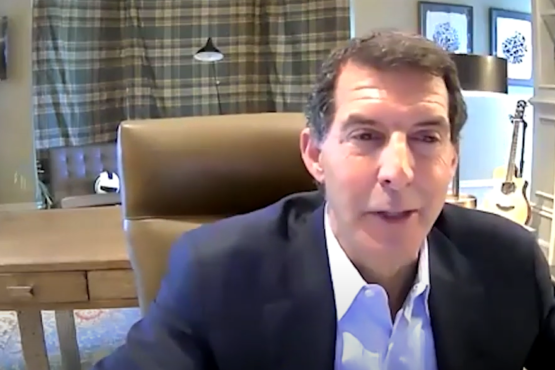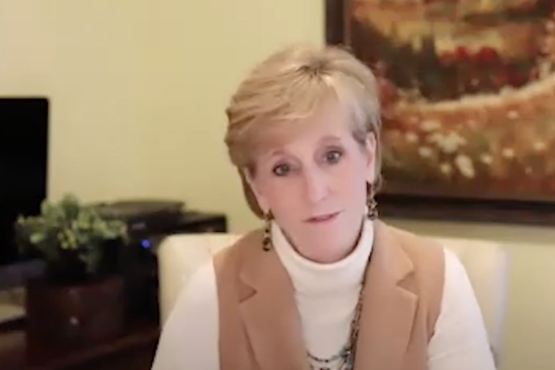There’s a glaring absence in our nation’s sprint to fix healthcare.
Ironically, the buzz words change, disruption and transformation are everywhere. In fact, a whole sub-culture – the change agents – has sprouted from this collective industry focus on transformation. An army of disruptors (and MBA holders), they proclaim to slay the dragons of inefficiencies, rising costs and unpredictable outcomes with their swords of big data, artificial intelligence, Bitcoins, apps, EMRs and various technological weapons of mass innovation.
Yes, it’s true that technology has accelerated the reveal of healthcare’s challenges, and yes, the digital revolution holds tremendous promise to cure the industry’s many ailments.
But technology alone isn’t going to fix healthcare. People – more precisely people who understand how and why people change – are. This is an art, and it’s what’s missing from the transformation our industry so desperately needs.
If technology and data alone can make people change, Fitbits would have solved our nation’s obesity epidemic by now. And yet, the percentage of adults and children who are obese is higher than it’s ever been. Literally.
True change happens from within, and in no place is this truer than healthcare, an industry powered by thousands of mission-driven caregivers, fraught with politics, ridden with challenges and ripe with opportunity.
At its very core, healthcare is a people business. If there’s one thing we know from decades of working with healthcare organizations in moments of change, challenge and opportunity (and being humans ourselves, it is this: People make a choice to change on their own terms, and they do it from an emotional, not rational, place.
To fix healthcare, we must put equal emphasis on the art – not just the science – of change and transformation. As leaders, we must inspire, redefine and challenge. We must create a new vision for healthcare, one that captures people’s hearts – not just informs their minds – and stirs within them a desire to change, evolve and create a better system.
Looking for Change in All the Wrong Places
In case you’ve been living under rock, at the beginning of the year the biggest predicted drivers in healthcare for 2019 were: artificial intelligence, telehealth, consumerism, big data and digital health. This year, the world’s healthcare organizations are predicted to spend $1.7 billion on IT for the application of AI. Meanwhile, the technology spend catering to out-of-hospital settings will likely grow by 30 percent to $25 billion globally in 2019.
And, 33.8 million results pop up on Google when you search for disruption and healthcare. Meanwhile, there are 325,000 healthcare apps on the market.
While this train of digital innovation is great, technology alone isn’t enough. As an industry in search of the best version of itself (not to mention a more sustainable future), healthcare needs artists, not just disruptors, who can simplify the complex, inspire people and move them toward a new vision for our industry.
Tools of the Change Trade
Real change happens from within and creating an environment for this change is an art. As artists of change, here’s what we know to be among the most critical elements of creating change.
Big Stories vs. Big Data: Which Will You Remember?
Stories are among the most powerful, universal and time-tested elements for influencing people. There’s no more fertile soil for compelling stories than healthcare, especially the delivery of healthcare, where miracles (and mistakes) happen every day.
Alexandra Drane, the co-founder of Archangels and Eliza Corp., shows the power of story in her experience as a cashier at Walmart. As she shares the stories of the people she met through this experience, she brilliantly points out that we can’t change healthcare if we don’t understand the people we’re trying to change. Amen!
And guess what? We’ve yet to meet members of the aforementioned disruptor army who understand what it’s like to make $8.50 an hour and choose between food and medicine for their kids.
But for stories to be influential, people must see themselves within them, which is one of the many reasons we need more diversity of leadership in healthcare. To evoke change, stories must unify, speak to the issues important to those we’re trying to influence and reflect their values. Politicians spend countless hours and money on this, as do advertisers. While we may not have to go that far, healthcare could benefit from a healthy dose of audience awareness as we attempt to change our industry.
And if you still need further proof of the power of audience awareness and story, look no further than nation’s last presidential election.
Something Bigger Than Thyself
For people to truly change, they must believe in something bigger and greater than themselves. The good news is that caregivers already do!
Healthcare is a calling, not a job. The very people we’re trying to convince of the need to change entered the profession to save lives, heal patients and care for people in their greatest times of need. Every day, they transplant organs, deliver babies, save people from disease, watch as patients take their last breath and tell family members that they’ve lost a loved one.
And yet, we assault them with the tools of data, algorithms and metrics in an effort to reason with them when it comes to the need to change.
Do they want to be part of positive change in healthcare? You bet. But chipping away at their armor of mission, ethics and integrity are the perils of EMR installations, increasingly complex coding requirements and ceaseless reams of data entry. Change fatigue and burnout are at an all-time high, and more often than not, caregivers’ faces glow behind computer screens while patients sit, yearning for a richer experience and more human connection.
While data and technology are critical, we must inspire these caregivers by tying change – and the need for change – to their sense of mission, courage and healing.
Ask Not What Change Can Do for You, But What You Can do For Change
Perhaps nothing, however, is more mission-critical to true change than leadership in action. And it’s not just “living out the values.” You already know that and probably have a few books on the shelf about it.
Instead, it’s intentionally creating an environment of change in which you’re intimately – but more importantly, visibly – involved, supportive and learning from your colleagues. Your presence sends a signal. Use it wisely.
On one hand, true change takes vulnerability, embracing the risk of failure and collaborating (especially with physicians). On the other, decisiveness and action.
And, it won’t surprise you to read that we believe communicating this work in an engaging way is at the very heart of successful change. If you don’t tell anyone about it, you miss an opportunity to create a movement in your organization.
Change: Get On Board
One of the best definitions of art is: to take something that’s familiar and make it unfamiliar – to see or experience something we know in a new way.
This is precisely what’s underway with our nation’s healthcare system. We’re trying to redefine the delivery of healthcare, and the change needed to do so is incredibly vast and far-reaching.
Creating – and sustaining – change of this size is a true art, and while technology speeds up the process, it’s the artistry of change that’s truly needed to redefine healthcare.
For more on how Jarrard Inc. is thinking about the patient experience and change in healthcare, head over to The Art of Change, a thought leadership platform addressing the relationships and fundamental human dynamics at the core of our industry.
This article originally appeared on The Art of Change as What’s Missing from the Change Train, by Molly Cate



